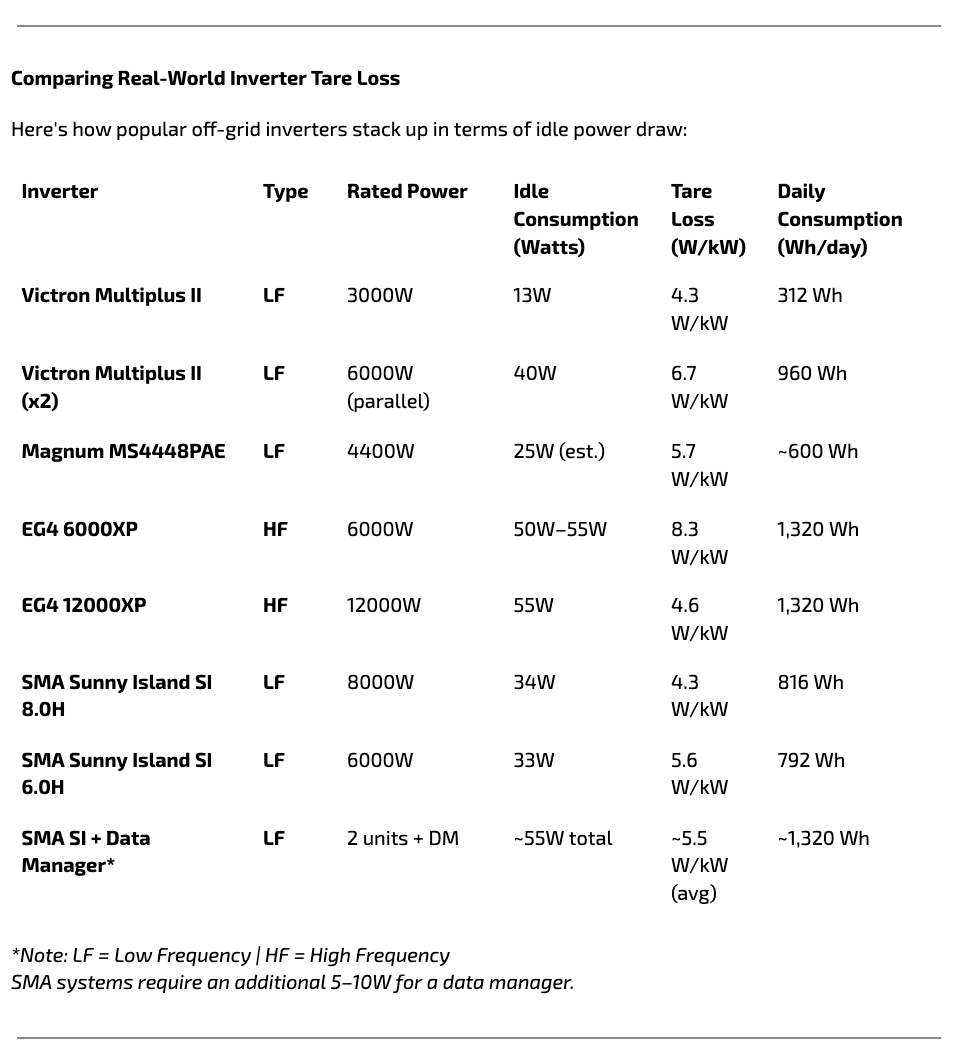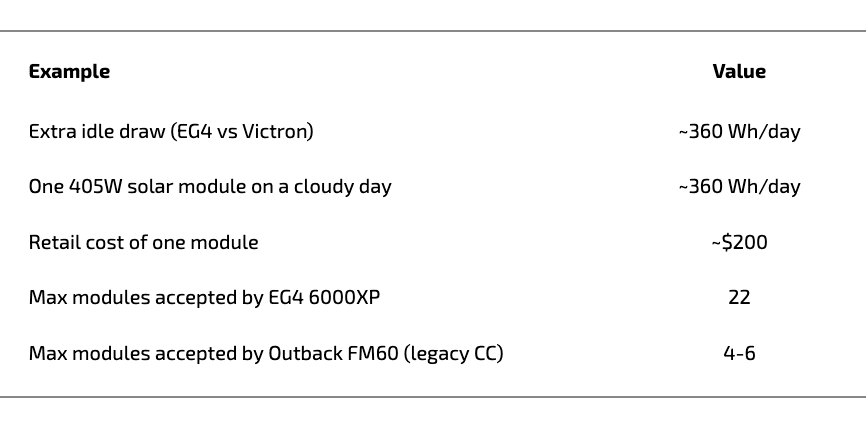Understanding Tare Loss: Why Today's Off-Grid Inverters Are More Efficient
DR
If you’ve spent any time living off-grid, you’ve probably heard concerns about tare loss - the power your inverter consumes just to stay on, even when no loads are running. This idle draw used to be a big deal, especially when systems were built around limited lead-acid batteries and small solar arrays but technology has improved and a lot has changed.
What Is Tare Loss?
Tare loss (also called standby or idle consumption) is the electricity an inverter uses just to stay powered on, even when it’s not actively delivering power to your loads. It’s like your gas car idling in the driveway, using fuel even though it’s not going anywhere.
When high-frequency inverters first entered the market, idle consumption was a real concern. But just like everything else in tech, inverter efficiency has improved, and with today’s lithium batteries and inexpensive solar arrays, the impact is often overstated.

Why This Matters Less Than You Think
Let’s say you’re using an EG4 6000XP, the least efficient of the group. Its idle draw is about 360 Wh/day MORE than a pair of Victron units. That might sound like a lot until you realize that a single modern solar module on a cloudy winter day can make up that entire difference.

Now let's compare system costs & savings
A 6000W victron (2 Mutliplus II + 2 Charge controllers + Cerbo) with multiple components Retails for $4,800
A 6000XP EG4 all-in-one equivalent Retails for $1,940
That is a savings of $2,860 which equals 14 additional solar modules for that price difference.
With systems now built around lithium batteries and overbuilt solar capacity, the small differences in tare loss fade into the background. Consumers who are upgrading from Magnum inverter and Outback charge controllers to modern high frequecny (HF), all-in-one systems are doubling or tripling their solar arrays at the same time, simply because they can. That more than offsets any increase in idle consumption.
What used to be a critical limitation is now just a rounding error in a system that’s overall far more capable and affordable than ever.
If you want to power your home or off-grid cabin with confidence, focus on the whole system, not just one metric in isolation.
Send us an email at [email protected] and will help you design the perfect system for your on and off-grid set-up.
